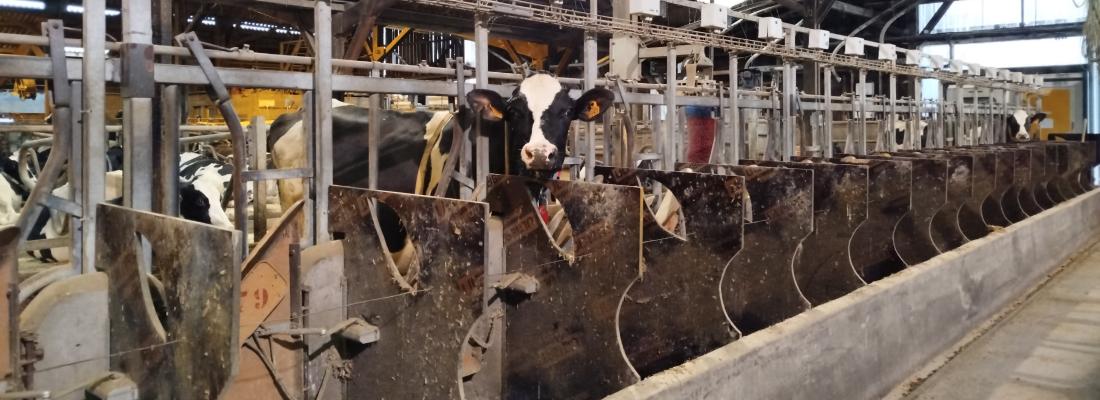Agroecology Reading time 5 min
Individualized feeding of dairy cows makes it possible to produce as much with less
Published on 06 March 2025

In dairy farms, cows are commonly fed a mixture of forages and concentrates ad libitum. To improve the energy status and productivity of dairy cows, individualized feeding strategies have been proposed. One of these strategies is to provide supplemental concentrates to adjust the forage-to-concentrate ratio based on factors like individual milk yield or calculated energy balance. This strategy can affect milk production and cow health, although consistent rules for adjustment are lacking.
The objectives of this study were to evaluate the effects of an individualized feeding strategy, adjusted weekly based on the BW gain of dairy cows, on production performance; and to determine whether the metabolic status of the cows could be predicted early in lactation to later be included in the decisions rules of the strategy. A total of 40 multiparous Holstein cows were involved in a 4-mo trial. The cows entered the experiment individually after calving and were initially fed a standard ration with a fixed 3 kg of extra concentrate per day for the first 8 d (on average). The cows were then paired based on calving date, parity (2 or 3), and BW gain over the initial week. One cow from each pair was assigned to the standard feeding strategy, which continued on the fixed ration, and the other was assigned to the precision feeding strategy, which received a variable amount of extra concentrate adjusted weekly based on BW gain. Measurements included weekly BW, daily milk yield, and daily intakes of concentrates and forages. Blood samples were collected to measure metabolites (glucose, BHB, nonesterified fatty acids) for metabolic profiling.
The results showed no significant differences in overall BW gain, milk yield, or intakes (concentrates, forages, total intake). Two metabolic clusters were identified based on blood metabolites (glucose, BHB, nonesterified fatty acids), predicting cows' metabolic status with 90% accuracy. The balanced cluster had higher milk production, feed intake, and lost more BW than the imbalanced cluster. Alternative variables such as BW gain and total feed intake can be used to predict metabolic clusters, achieving up to 70% accuracy.
To conclude, cows fed this precision feeding strategy had similar performances than those fed the standard feeding strategy. The long-term effect of this strategy should be studied. Metabolic profiling predicted cows' metabolic status, suggesting its potential for enhancing individualized feeding decisions.
References
Gaillard, C.; Abarnou, J., 2024. Responses of dairy cows to weekly individualized feeding strategies regarding their metabolic status. Journal of Dairy Science, 107 (12): 10776-10786 http://dx.doi.org/10.3168/jds.2024-25209
